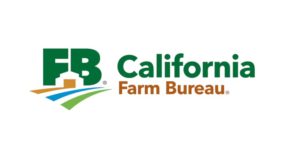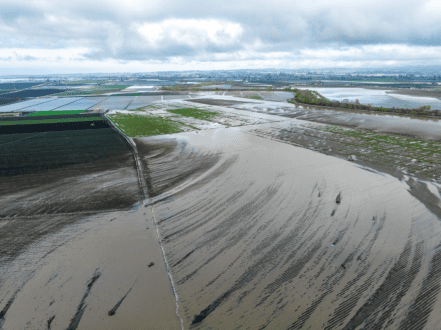May 16, 2023Commentary: Golden State growers want solutions for flood-control issues
The destruction to agricultural properties and crops from January and March flooding in Monterey County is considerable. There is frustration about a failure to address known dangers that caused or worsened the flood toll in this critical farming region.
For decades, the Salinas River channel has been clogged with excessive vegetation, much of it non-native Arundo donax, a bamboo-like reed that grows to more than 30 feet at maturity and creates vegetative dams. Significant sediment buildup also decreased the flow capacity of the river during heavy storms, such as the atmospheric rivers this winter.


Fortunately, in January, reservoirs were nearly empty and could capture much of the flood capacity before it contributed to river drainage flows. That was not the case in March when reservoirs were forced to release water to increase storage space for incoming water. Due to additional flows, the Salinas River watershed endured significantly more flooding, which inundated the already saturated landscape around the river.
What was most frustrating for our landowners, farmers and ranchers was the diminished capacity of the river channel due to permit restrictions on channel maintenance work. For decades, they have been telling multiple agencies the permitting process was inadequate for enabling meaningful flood protection measures and much too costly to navigate.
Now, farmers are saying “we told you so” because the environmental damage is immense. Topsoil has been washed away, levees damaged and farm equipment destroyed due to inactivity in the river channel.
Last month, in the wake of the storm damage, farmers along the Salinas River came together to draft a unified “Flood Mitigation Pathway Forward” document, which was presented to state and federal agencies and our elected officials. The document calls for consensus solutions to allow holistic work in the river channel and its tributaries to enhance flood-flow capacity, improve the environment and minimize economic damage from natural disasters.
This is not too much to ask when farmers and landowners here in the Salad Bowl of the world are looking at more than $1 billion in flood damages since January.


As a result, minimal work has been accomplished in the past decade to enhance the Salinas River channel to control even an eight-year flood level, which is what occurred here this year. In 1995, the last disastrous flood in the Salinas Valley, the water flow was recorded at 90,000 cubic feet per second (cfs). The flow in 2023 was one-third of that level at 30,000 cfs. Yet, similar flooding occurred, clear evidence that the river channel is not able to control the capacity flow as it once did.
Part of the frustration is the inability to improve our levee systems along the river. Realizing the river was originally meandering throughout the Salinas Valley, the U.S. Army Corps of Engineers channelized it in the 1940s to mitigate disastrous flood events. Levees built decades ago now need significant reinforcement to build upon what the corps started. Many of the recent levee failures would have been avoidable if proper maintenance had been performed over the decades.
Our county’s food producers along the Salinas River know what needs to be done to enhance flood control and protect valuable farmland. They are committed to improving the environment of the river channel by controlling vegetative growth and sediment for adequate fish passage, as multiple agencies desire. But frustration builds when farmers are willing to make improvements at their own expense yet are not allowed to protect their own land without a burdensome permit process from multiple agencies.
We also have exasperation in the Pajaro Valley due to the levee failure along the Pajaro River. Improvements approved in the 1960s were finally funded and scheduled to begin work in 2026. That was too late for an entire town and vast acres of farmland that went underwater for two weeks in March. The blame falls on the arduous flood-protection process, which is prolonged, expensive and ultimately injurious to residents and farm operations.
Our farmers and ranchers are resilient. While they would much rather have water than drought, the frustration they feel after the flooding is deep. It is time we find a solution to protect our valuable farmland assets from excessive regulatory hurdles. Our food production depends on it.
– Norm Groot is executive director of the Monterey County Farm Bureau
PHOTO ABOVE: Floodwaters cover farm fields in Monterey County in March. Property damages and crop losses from multiple atmospheric storms in January and March are estimated at $1 billion. Photo: California Department of Water Resources















